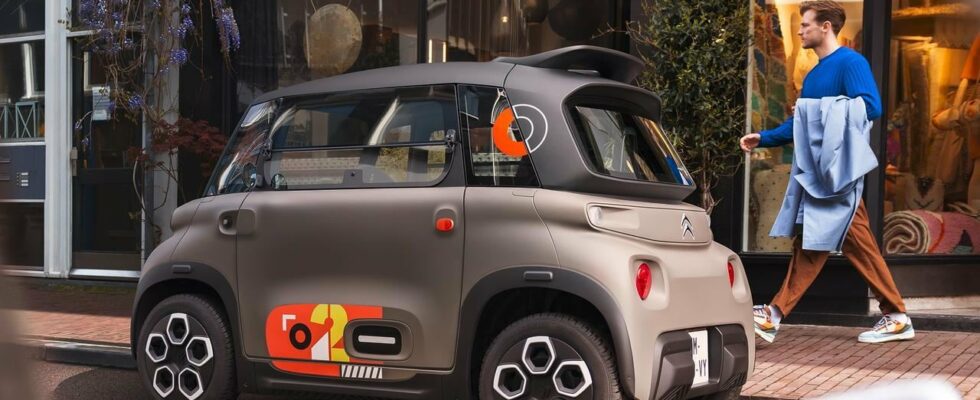With a market at half mast, after an exceptional year 2023the automotive sector sets up at Porte de Versailles in Paris (from October 15 to 20). In this gloomy context, manufacturers must meet numerous challenges: launching new models, dealing with the establishment of foreign competitors in France, responding to success of electric vehicles which cannot be denied, especially within automobile fleets, inventing alternative transport with the undeniable proliferation of cars without a license for the private market. Automotive professionals must adapt to new modes of mobility.
The cart is getting a big facelift. Brought up to date by the Citroën Ami, it is increasingly attractive, especially among young people. “The market has doubled in four years to reach 60,000 registrations in Europe, including 30,000 in France,” notes François Ligier, eponymous CEO of the company. In addition to the traditional clientele of elderly people in rural areas, or those with disabilities, there are now adolescents. “They see it as an alternative to the scooter, safer and more comfortable. The 14-year-old public represents 40% of our sales in France, 90% in Italy and 100% in Sweden. They want less discreet models, of which they are proud” , specifies François Ligier.
Models that appeal to high school students
Two categories exist. The first, called L6, only offers two seats and its speed remains limited to 45 kilometers/hour. “It is popular in the countryside poorly served by transport, especially among high school students,” notes Rémy Dumont, general director of Microlino. The Swiss company arrived in France a year ago in the second class (L7), authorized from 16 years old, which travels up to 90 kilometers/hour and allows peri-urban journeys. “The decarbonization of mobility involves electric energy, but also smaller and lighter vehicles. We therefore opted for a self-supporting steel chassis, an aluminum body and three types of battery that plug into an outlet standard. We thus divide greenhouse emissions by three compared to an electric Fiat 500″, says Rémy Dumont. François Ligier agrees: “With the electrification of our range, we are reaching young workers who are affected by the sprawl of cities.”
These new aficionados are attracting manufacturers, starting with Nissan which markets Silence O. “We want to learn from this new mobility, rejuvenate our drivers and retain them earlier,” explains Richard Tougeron, its general manager in France. The Japanese does not skimp to convince them: removable battery interchangeable with that of a scooter of the brand, electric windows, power steering, air conditioning and virtual key on the phone which allows you to lend your quadricycle remotely. “In the South, cities are becoming saturated and the appetite for more manageable machines is growing,” assures Richard Tougeron.
A category that does not benefit from the advantages of ecological cars
In fact, the Provence-Alpes-Côte d’Azur region constitutes Kate Auto’s main market. The company offers a high-end leisure model, of the mini Moke type from the 1960s. “It is suitable for second homes by the sea and for walks in the vineyards. It also appeals to large hotels, such as the Normandy in Deauville, because it carries four people but reduces the carbon footprint compared to its traditional equivalent. We use half as many materials”, underlines Paul Quéveau, the general director. It is also in this niche that EV group is positioned, which has been importing Buggy, Opensky and Zeromax from the Italian Tazzari since June. “We favor significant customization so that the customer has an object that resembles them,” says Benoît Fleurisson, its director.
The fact remains that microcars do not benefit from the advantages of ecological cars. Players in the sector are pleading for higher bonuses than for motorcycles, cheaper reserved spaces since they take up less space on the ground and access to regulated roads, such as expressways, which are currently prohibited to them. . Lobbying which was delayed due to lack of ministerial interlocutors.
.
